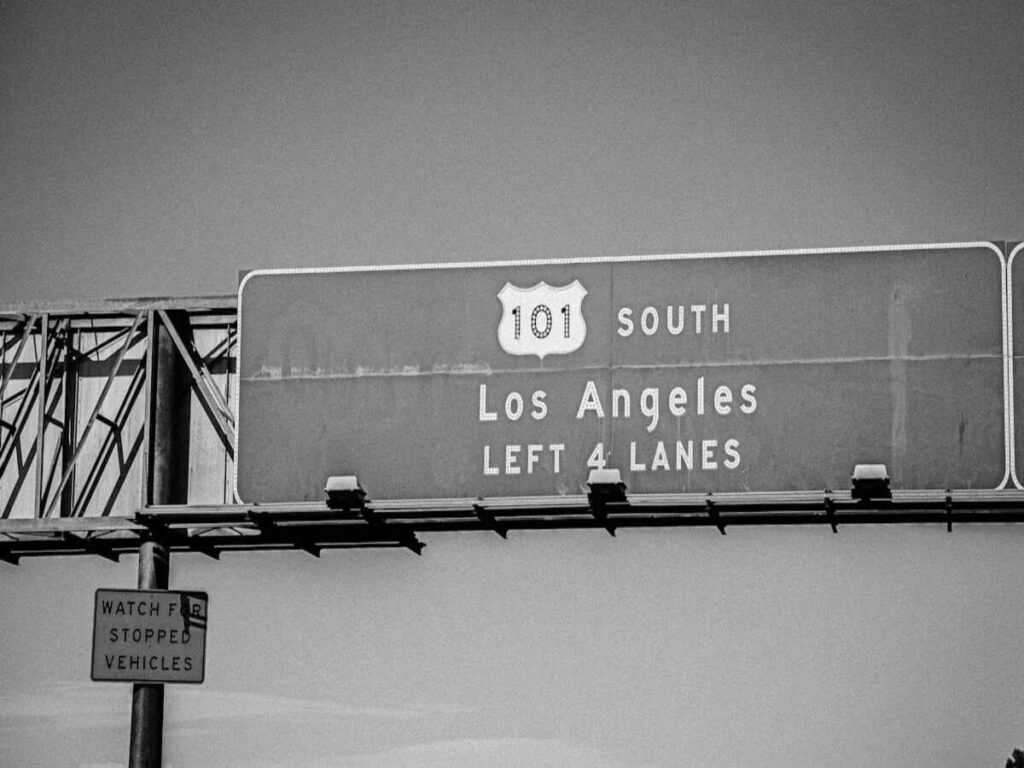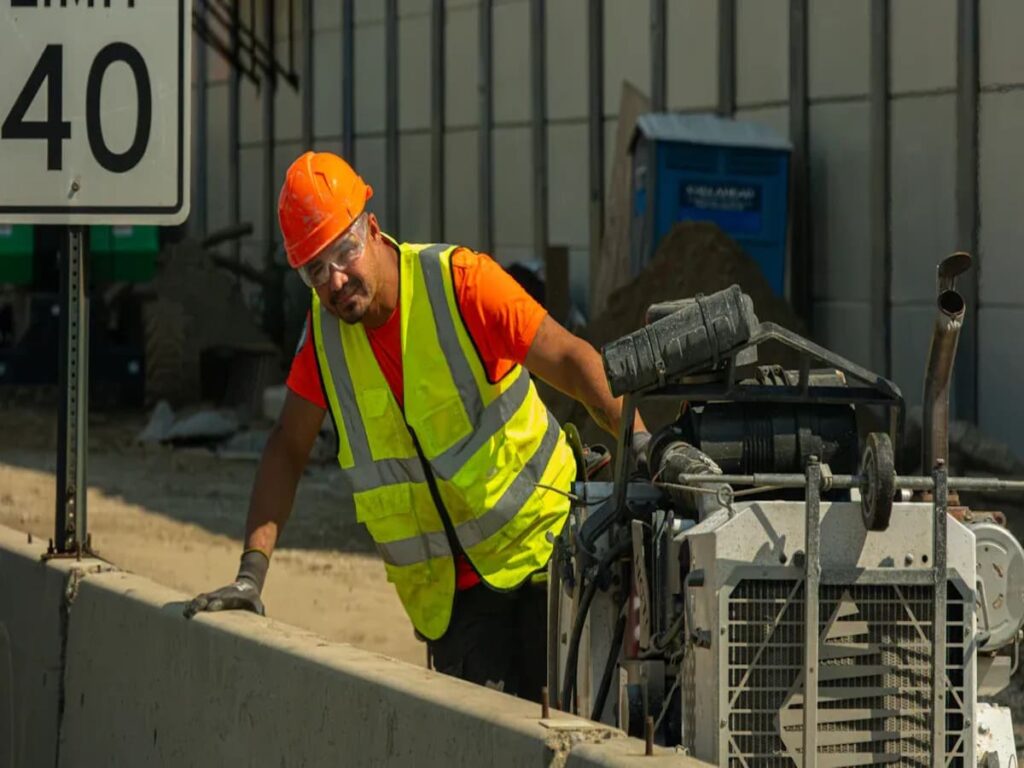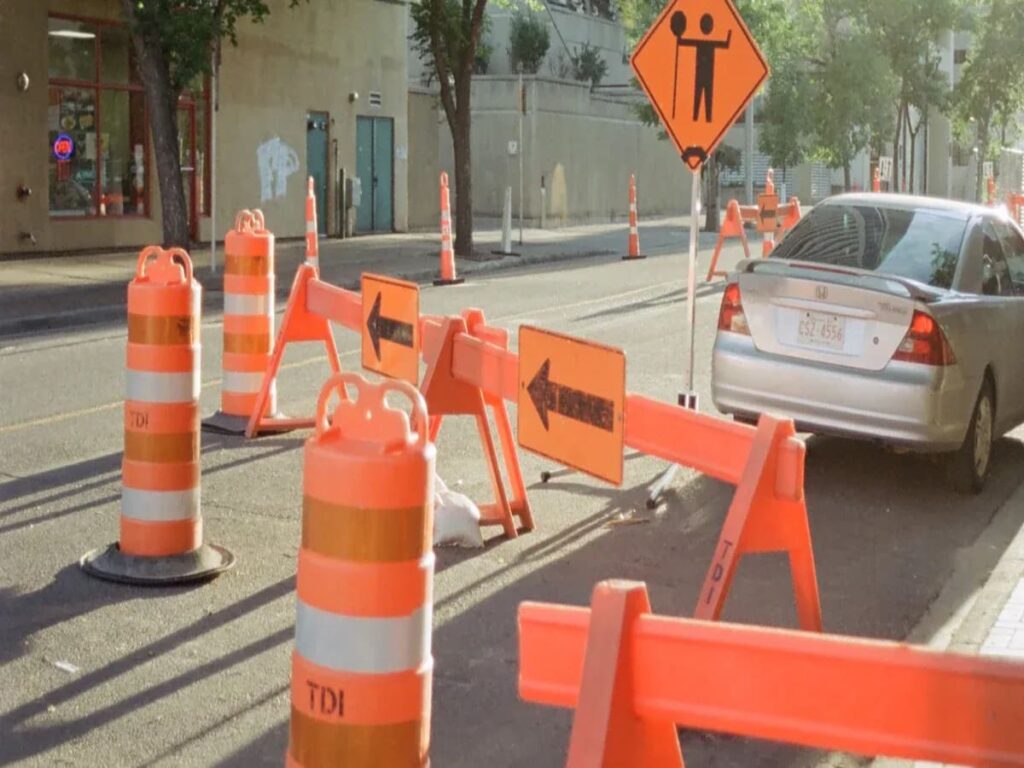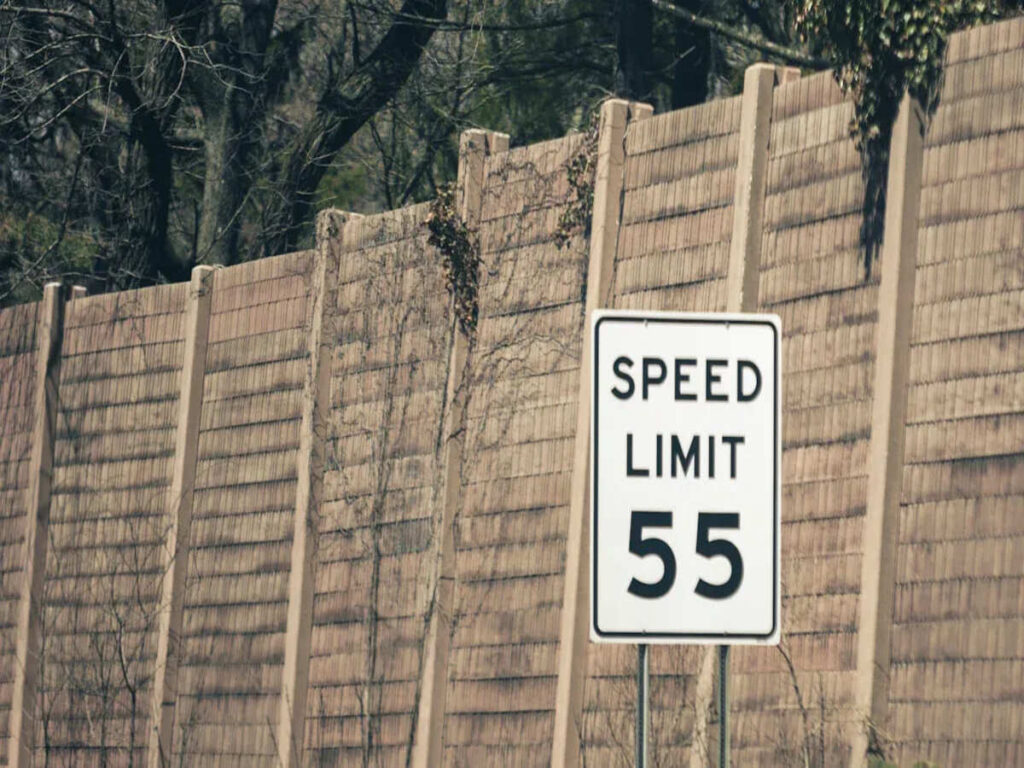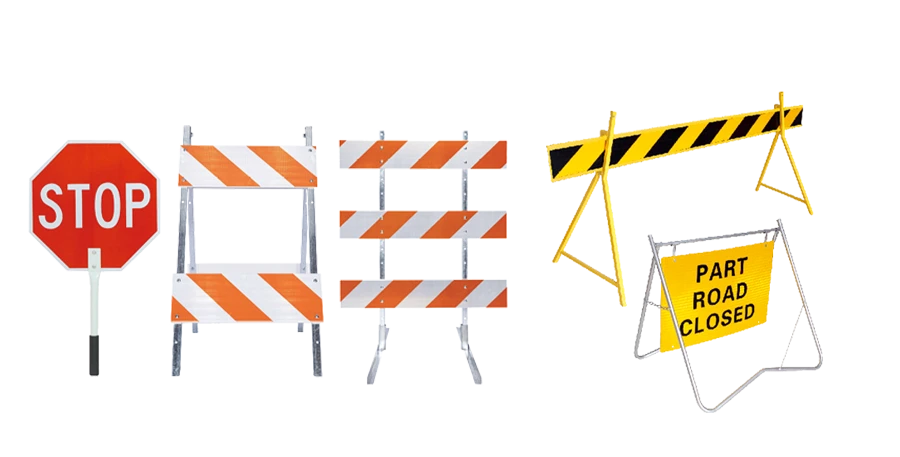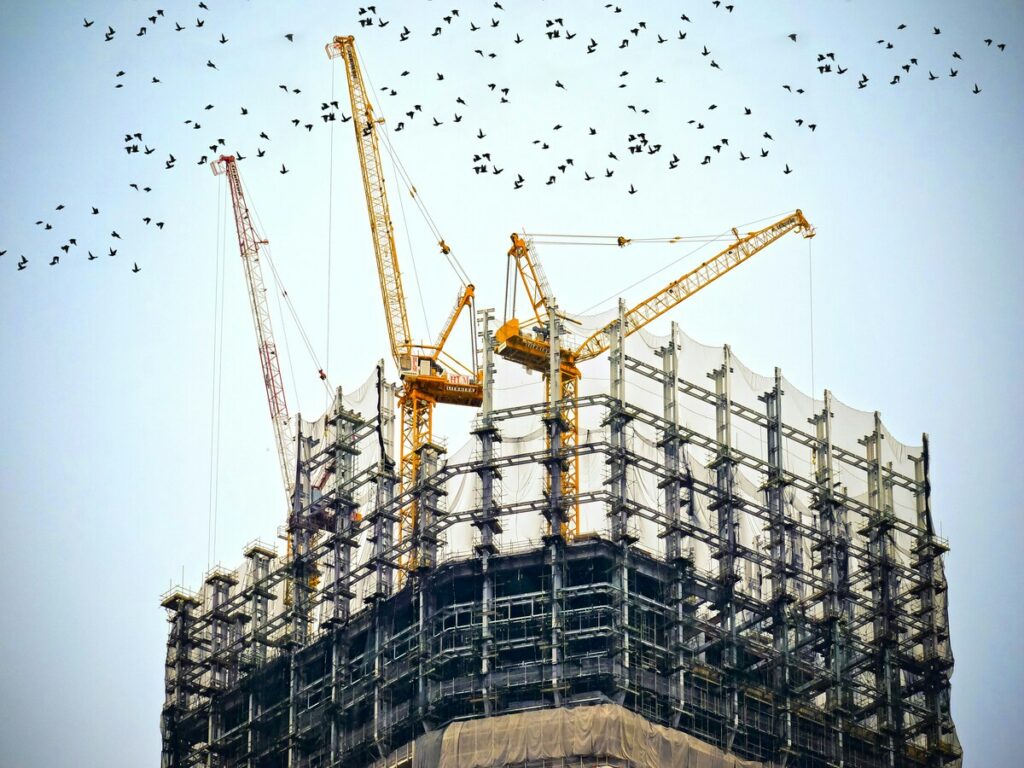
Дорожные рабочие зоны могут быть опасными как для работников, так и для водителей. You must understand Australian traffic laws to ensure safety and avoid legal issues. В Австралии, traffic cones are often referred to as witches’ hats or traffic pylons. These safety cones play a vital role in road work zones. Они направляют транспортные средства, mark safe areas, и защищать работников. Acting as visual warnings, they help drivers navigate safely around hazards. By diverting traffic and creating clear boundaries, they reduce accidents and enhance safety for everyone on the road.
As road safety standards continue to evolve, the demand for high-performance safety cones is growing—driven not just by regulation, but also by innovation in materials, видимость, и долговечность. To learn how these trends are shaping the industry, check out our in-depth analysis in the 2025 Перспектива индустрии индустрии дорожного движения: Инновации и спрос на будущее.
The Role of Traffic Cones in Road Work Zones in Australia
What Are Road Work Zones?
Road work zones are areas where construction, обслуживание, or repairs occur on roads or highways. These zones often involve activities like resurfacing, утилита работы, or bridge repairs. You’ll typically find them in both urban construction zones and rural areas. These zones can disrupt normal traffic flow, creating potential hazards for drivers and workers. To manage these risks, clear boundaries and traffic control measures are essential.
Why Traffic Cones Are Essential for Safety
Traffic cones play a critical role in maintaining safety in road work zones. Their bright orange color and reflective sheeting make them highly visible, even in low-light conditions like dusk or heavy rain. You’ll notice that they guide vehicles away from closed lanes and direct traffic through safe routes. By acting as visual markers, they help drivers adjust their speed and lane positions, снижение риска несчастных случаев. В Австралии, plastic safety cones must meet Сорт 2 стандарты безопасности or higher to ensure they are effective in all conditions. Proper placement of these cones is vital for protecting workers and keeping traffic flowing smoothly.
- Traffic cones serve as visual guides and safety markers.
- They enhance safety by managing traffic flow effectively.
- Strategic placement ensures compliance with safety regulations.
The Connection Between Traffic Cones and Legal Compliance
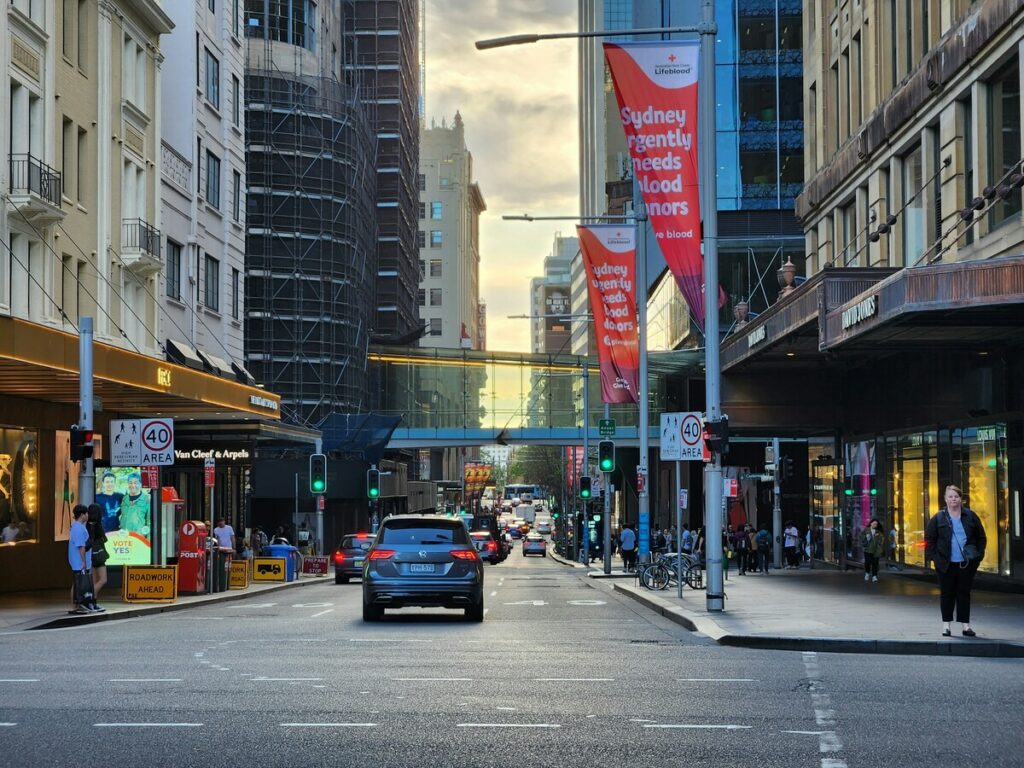
Using traffic cones correctly isn’t just about safety—it’s also a legal requirement. Australian traffic laws mandate that road work zones follow strict guidelines for setup and traffic management. Plastic safety cones must be placed according to these regulations to ensure visibility and effectiveness. Failure to comply can lead to fines, legal actions, and increased risks for workers and drivers. Придерживаясь этих стандартов, you not only protect lives but also avoid legal complications.
Optraffic обеспечивает высококачественное Australian traffic cones that meet these strict legal and safety standards. OPTRAFFIC traffic safety cones are designed to provide maximum visibility and durability in a variety of work zones. When you choose OPTRAFFIC, you ensure your roadwork projects are compliant with regulations while keeping both workers and drivers safe.
Key Australian Traffic Laws Governing Road Work Zones
The Road Safety and Traffic Management Act (RS-TMA)
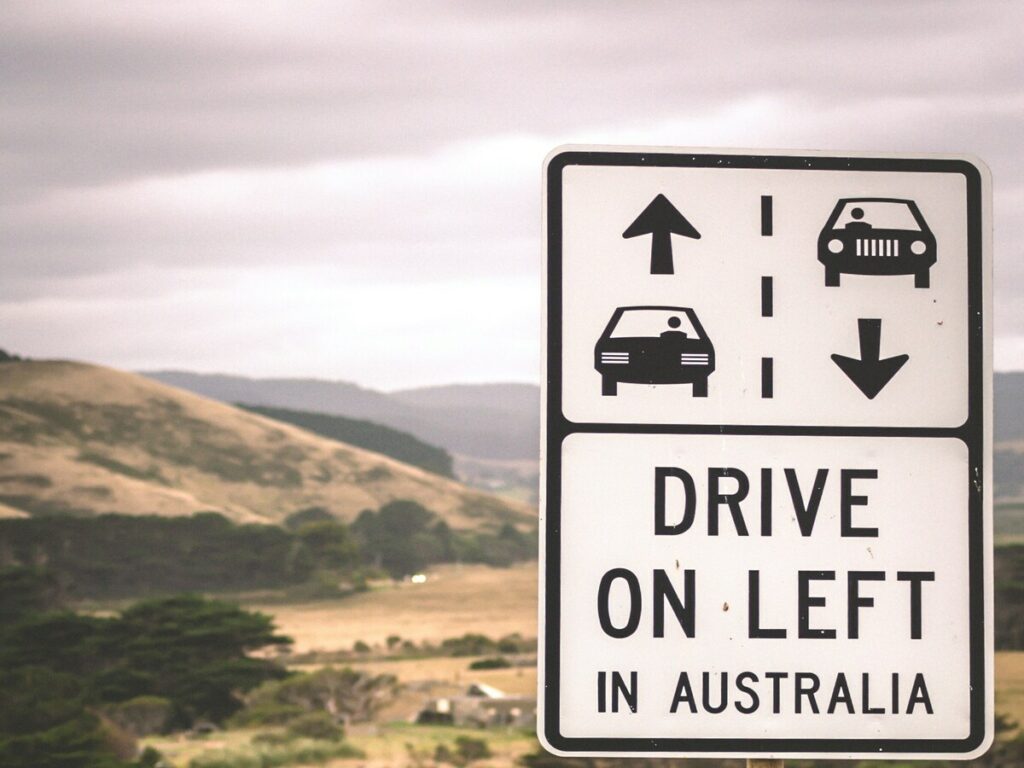
The Road Safety and Traffic Management Act (RS-TMA) outlines essential measures to ensure safety in road work zones. You’ll find that it emphasizes strategies to protect workers, водители, и пешеходы. К ним относятся:
- Full or partial road closures and detours.
- Using rolling roadblocks to safeguard setup and removal operations.
- Enhanced visibility through warning flags, свет, and changeable message signs.
- Speed management tools like speed safety cameras and drone radar.
- Worker protection using shadow vehicles and intrusion alarms.
The RS-TMA also promotes advanced solutions like Интеллектуальные транспортные системы (ЕГО) to improve traffic flow and safety. Traffic cones play a vital role here by guiding vehicles, marking safe zones, and creating pedestrian pathways. Proper placement of cones ensures drivers can navigate hazards safely, reducing risks for everyone.
Legal Requirements for Road Work Zone Setup
Setting up a road work zone requires strict adherence to legal guidelines. You must ensure the zone is clearly marked and equipped with appropriate traffic control devices. These devices include traffic cones, Баррикады, и предупреждающие знаки. Cones must be visible and strategically placed to alert drivers to hazards and guide them safely. В городских районах, traffic cones often create pedestrian pathways, ensuring their safety and visibility. Во время чрезвычайных ситуаций, plastic traffic cones establish secure perimeters, protecting responders and directing traffic away from danger.
The law also mandates the use of trained personnel, такие как флаггеры, to manage traffic effectively. You should always follow these requirements to maintain safety and avoid legal penalties.
National Standards for Traffic Control Devices (AS1742.3)
The AS1742.3 standard governs the use of traffic control devices in Australia. It provides detailed guidelines for the design, размещение, and maintenance of these devices in road work zones. You must ensure all traffic cones meet these standards to guarantee their effectiveness. Например, plastic traffic cones should have reflective sheeting to remain visible in low-light conditions. Proper spacing between plastic traffic cones is also crucial to guide traffic smoothly and prevent confusion.
This standard also emphasizes the importance of clear signage and markings. High-quality pavement markings and the removal of misleading ones are essential. By adhering to AS1742.3, you can create a safer environment for workers and road users alike.
The Legal Requirements for Using Traffic Cones in Road Work Zones
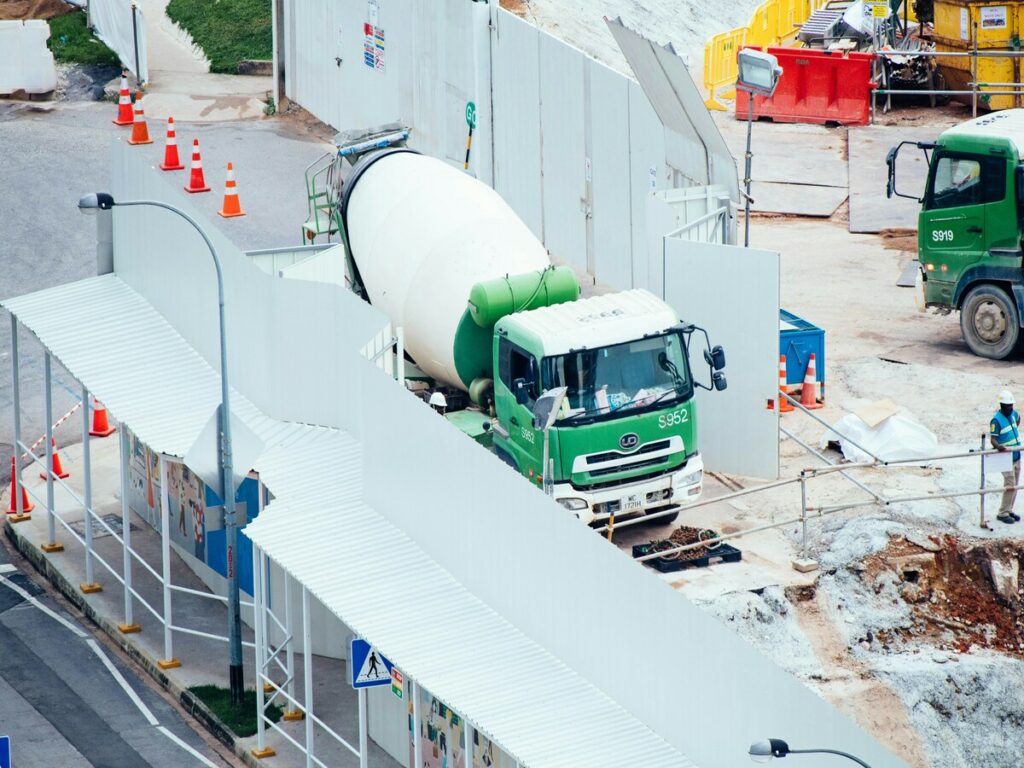
Legal Placement and Visibility Standards for Traffic Cones
Traffic cones must meet specific legal standards to ensure safety and compliance in road work zones. These standards focus on placement, видимость, и расстояние. The table below outlines the key requirements:
| Требование | Спецификация |
|---|---|
| Высота | По меньшей мере 28 дюймы (710 мм) tall for visibility from a safe distance. |
| Отражающая лист | Must have retroreflective sheeting visible from at least 500 ноги (150 м). |
| Цвет | Typically orange, with fluorescent orange for higher visibility. |
| Интервал | Generally between 10 и 50 ноги (3 к 15 метры) отдельно, depending on speed. |
You should adjust cone placement based on the speed of traffic and the type of work zone. For urban areas with speeds of 25 mph or lower, plastic traffic cones should be spaced 10 футы друг от друга. In higher-speed zones, spacing may decrease to 5 ноги. Follow these steps to ensure proper placement:
- Assess the work zone and identify areas needing traffic control.
- Determine spacing based on speed limits and roadway type.
- Use a 20:1 taper rate for lane closures. На каждый 20 Ноги закрытия полосы движения, extend 1 foot for the taper.
Proper placement and visibility of cones help drivers navigate safely, reducing risks for workers and road users.
Traffic Control Plans and Their Legal Significance
Планы управления движением (TCPS) are essential for ensuring legal compliance in road work zones. A well-designed TCP creates a safe environment for workers and the public by clearly marking work zones. It also organizes traffic flow to minimize delays and congestion. The table below highlights the key aspects of TCPs:
| Аспект | Описание |
|---|---|
| Безопасность | TCPs create a safe environment for both workers and the public by clearly delineating work zones. |
| Эффективность | Organizing traffic flow helps minimize delays and congestion. |
| Согласие | Developing and implementing a TCP ensures that legal requirements are met. |
You must adhere to local, состояние, and federal regulations when establishing work zones. This ensures that your project meets legal safety and operational standards. A comprehensive TCP not only protects lives but also prevents legal complications.
Compliance with Local and State Regulations
Each state and local government in Australia has specific regulations for road work zones. You must familiarize yourself with these rules to ensure compliance. Например, some states may require additional signage or specific cone types for certain projects. Always coordinate with local authorities to confirm that your setup meets all legal requirements. Using compliant traffic control devices, such as plastic safety cones, ensures that your road work zone adheres to national and regional standards.
Failing to comply with these regulations can result in fines, legal actions, and increased risks for workers and drivers. Следуя правилам, you create a safer environment and avoid unnecessary penalties.
Penalties and Legal Implications for Non-Compliance with Traffic Cone Laws
Consequences for Misplacing or Misusing Traffic Cones
Misplacing or misusing traffic cones can create serious risks in road work zones. When plastic traffic cones are not placed correctly, drivers may fail to notice hazards, приводя к несчастным случаям. Improper use, such as using damaged or non-compliant cones, reduces their visibility and effectiveness. В некоторых случаях, moving traffic cones without proper authorization can be illegal, as it may violate local traffic regulations or traffic control plans. You could also face liability if an accident occurs due to poor cone placement. Workers and pedestrians rely on these safety cones for guidance and protection. Misuse compromises their safety and increases the likelihood of injuries. Always ensure plastic traffic cones meet legal standards and are positioned according to traffic control plans.
Fines and Legal Actions for Inadequate Road Work Zone Setup
Failing to set up a compliant road work zone can result in significant penalties. Authorities may issue fines for not following regulations, such as improper cone spacing or using non-reflective cones. В некоторых случаях, legal actions may follow if negligence leads to accidents or injuries. Например, in urban construction zones, inadequate setups can disrupt traffic flow and endanger pedestrians. You must adhere to local and national standards to avoid these consequences. Proper planning and execution of traffic control measures protect you from legal and financial repercussions.
The Impact of Non-Compliance on Worker and Public Safety
Non-compliance with traffic cone laws directly affects the safety of workers and the public. Without proper cone placement, drivers may enter restricted areas, putting workers at risk. Pedestrians may also wander into unsafe zones without clear boundaries. Accidents caused by non-compliance can lead to severe injuries or fatalities. You have a responsibility to ensure road work zones are safe for everyone. Following legal guidelines minimizes risks and creates a secure environment for all road users.
Best Practices for Legal Traffic Cone Usage in Australia
Adhering to AS1742.3: Australian Standards for Traffic Control Devices
You must follow the AS1742.3 standards to ensure traffic cones meet Australian safety requirements. These standards outline the design, размещение, and maintenance of traffic control devices in road work zones. Например, plastic cones must have retroreflective sheeting to remain visible in low-light conditions. Their height and spacing should align with the speed of traffic and the type of roadway.
Regular inspections are essential to maintain compliance. Damaged or faded cones reduce visibility and compromise safety. Replace plastic cones showing wear and tear immediately. Proper adherence to these standards ensures that plastic cones effectively guide vehicles and protect workers. By following AS1742.3, you create safer traffic management scenarios and avoid legal penalties.
Coordinating with Local Authorities for Safe Road Work Zone Design
Collaborating with local authorities is crucial for designing road work zones that prioritize safety while ensuring compliance with state-specific regulations in Australia. Different states and territories may have distinct requirements, but the general principles for safe road work zone design remain the same. Authorities can assist in several ways:
1. Настраивать: Maximizing Worker Protection
Each state in Australia has its own guidelines for roadwork zone setup to protect workers and minimize risks. Например:
- Новый Южный Уэльс (Штат Новый Южный Уэльс): The Транспорт для Нового Южного Уэльса provides detailed roadwork zone guidelines under the Traffic Control at Worksites (TCAWS) manual. They emphasize using appropriate safety barriers, такой как truck-mounted attenuators (TMAs) и temporary road safety barriers, to ensure clear separation between workers and traffic. Local authorities also work with law enforcement to ensure that these setups are safe and secure, especially in high-traffic areas or during peak hours.
- Виктория (Вице): The Victoria Road Safety Act 1986 mandates that roadwork zones have visible traffic control devices, включая Рефлексивные дорожные конусы, that meet specific visibility standards. Local councils coordinate with the Викродс team to approve the use of traffic cones and barriers based on road type and traffic volume.
2. Обучение: Ensuring Safety Protocols are Followed
Effective safety protocols can only be followed if the team is properly trained. Local authorities play a key role in enforcing state-specific training requirements:
- Квинсленд (Qld): In QLD, а Transport Operations (Road Use Management) Действовать requires that all workers involved in roadwork zones complete specific training on safety and traffic control. This includes training to handle manual traffic control devices и pedestrian management, ensuring that personnel are well-prepared to deal with high-risk scenarios.
- Западная Австралия (Из): The Work Health and Safety (WHS) Правила in WA specify that all personnel involved in traffic control must undergo certification in roadwork safety, which includes understanding proper cone placement и traffic flow management. Local authorities help facilitate this training and enforce the standards for worker safety across all work zones.
3. Stopping Work: Clear Guidelines for Halting Work When Safety Risks Arise
Ensuring worker safety means knowing when to stop work due to unforeseen hazards. Local authorities often provide the framework for making these critical decisions:
- Южная Австралия (на): Under the Road Traffic Act 1961, when there is an immediate risk to workers’ безопасность, such as inclement weather, equipment failure, or traffic incidents, work must cease. Local authorities, в том числе Департамент инфраструктуры и транспорта, help to assess and halt work when these risks are identified. They also ensure the implementation of mobile barriers и real-time monitoring systems to manage traffic until work can resume safely.
- Тасмания (Что): The Road Management Act in Tasmania requires work sites to be shut down in the event of severe weather or when unexpected hazards arise. The Tasmanian Local Government Traffic Management Act empowers local councils to direct the cessation of work when it becomes unsafe, especially on roads with high pedestrian or vehicle traffic.
4. Addressing Local Challenges
State and local authorities also assist in overcoming unique challenges, such as high-traffic areas or complex intersections:
- Австралийская столичная территория (ДЕЙСТВОВАТЬ): The ACT’s Transport and Infrastructure Management office helps roadwork teams design zones to minimize traffic disruption. In areas like busy intersections, local authorities mandate the use of temporary traffic signals или pilot vehicles to control the flow of traffic and maintain safety around the worksite.
- Северная территория (Н.д.): In the NT, with its unique road infrastructure, remote work zones may require additional support for safe traffic management. Local authorities work closely with roadwork teams to ensure the use of drone surveillance и traffic monitoring technology to monitor traffic and make adjustments in real-time.
By coordinating with local authorities, you ensure that your roadwork zone setup complies with both local regulations and broader Australian traffic safety standards. Working with state and local agencies ensures that your traffic control devices, включая Конусы безопасности дорожного движения, барьеры, и вывески, are used effectively, legally, and to the highest safety standards, minimizing risks for both workers and road users.
Ensuring Effective Traffic Management with Proper Cone Placement
Proper cone placement is critical for effective traffic management. Start by assessing the work zone to identify areas needing traffic control. Use spacing guidelines based on speed limits. Например, in low-speed zones, cones should be spaced no more than 10 футы друг от друга. In higher-speed zones, increase spacing to maintain visibility.
Implement a 20:1 taper rate for lane closures. Это означает для каждого 20 Ноги закрытия полосы движения, extend the taper by 1 foot. Regularly inspect plastic cones to ensure they remain upright and undamaged. Train your team on placement techniques to maintain consistency. Following these practices ensures plastic cones guide drivers safely and reduce confusion in traffic management scenarios.
Тематические исследования: Legal Successes and Failures in Road Work Zone Management
Positive Outcomes from Strict Compliance with Traffic Cone Regulations
Strict adherence to traffic cone regulations has led to numerous safety improvements in Australian road work zones. You can see how proper cone usage enhances safety and efficiency in various scenarios:
- В городских зонах, plastic cones created dedicated pedestrian pathways. This ensured pedestrians and drivers could navigate safely without confusion.
- Во время технического обслуживания, cones marked hazardous areas. This prevented accidents and kept workers and the public safe.
- For large events, plastic cones established temporary lanes. This improved traffic flow and reduced congestion significantly.
- В чрезвычайных ситуациях, plastic cones defined safe perimeters. This protected responders and directed vehicles away from danger zones.
- At construction sites, cones clearly marked vehicle lanes. This minimized collision risks and ensured smooth traffic movement.
These examples highlight the versatility of traffic cones. When you follow placement guidelines and safety standards, plastic cones become powerful tools for protecting lives and maintaining order. Proper cone usage not only prevents accidents but also ensures compliance with Australian traffic laws.
Legal Consequences of Failing to Follow Traffic Cone Laws
Failing to comply with traffic cone regulations can lead to severe consequences. Misplaced or non-compliant plastic orange cones often result in accidents and legal penalties. Например, in one case, a poorly marked work zone caused a driver to enter a restricted area. This led to a collision that injured workers and resulted in significant fines for the contractor.
Another example involved a construction site where plastic orange cones lacked reflective sheeting. Drivers failed to see the plastic orange cones at night, causing multiple accidents. Authorities imposed heavy penalties on the company for neglecting safety standards.
These failures demonstrate the importance of proper cone placement and maintenance. When you ignore regulations, you risk endangering lives and facing legal actions. Путем приоритета соблюдения, you can avoid these outcomes and create safer road work environments.
Understanding and following traffic laws in road work zones is essential for safety and legal compliance. Plastic safety cones play a pivotal role in guiding traffic, Маркируя опасности, и защита работников. Their proper use ensures visibility and adherence to Australian standards.
Compliance with traffic laws minimizes risks and enhances safety for everyone. The table below highlights key points to remember:
| Critical Point | Описание |
|---|---|
| Adherence to Traffic Control Plans | Companies should follow their traffic control plan and ensure proper signage and markings. |
| Use of Clear Signage and Barriers | Clear signage, барьеры, and cones should direct traffic safely around work zones. |
| Speed Limit Enforcement | Implement and enforce reduced speed limits using speed cameras and radar feedback signs. |
| Worker Visibility | Workers should wear brightly colored, reflective clothing to enhance visibility, Особенно ночью. |
| Regular Safety Training | Provide ongoing safety training and enforce strict safety protocols for all workers. |
Путем приоритета соблюдения, Вы защищаете работников, водители, and pedestrians while avoiding legal consequences. Always use traffic control devices like plastic safety cones effectively to create safer road environments.
Часто задаваемые вопросы
What are safety cones and why are they important in road work zones?
Конусы безопасности, often referred to as traffic cones, are essential tools used in road work zones to manage traffic and ensure the safety of both workers and road users. Their bright color and reflective sheeting make them highly visible, даже в условиях низкой освещенности. They are used to direct vehicles away from hazardous areas, create clear boundaries for workers, and reduce the risk of accidents by providing clear guidance for drivers.
How do safety cones contribute to legal compliance in road work zones?
В Австралии, the proper use of Конусы безопасности is not just about ensuring safety—it’s a legal requirement. The Road Safety and Traffic Management Act (RS-TMA) mandates that roadwork zones must be clearly marked with appropriate safety devices, включая Конусы безопасности, to guide traffic and protect workers. Non-compliance with these regulations can result in fines, юридические штрафы, and an increased risk of accidents in the work zone.
What legal standards apply to the use of safety cones in road work zones?
To ensure safety and legal compliance, Конусы безопасности must meet specific requirements regarding placement, видимость, и расстояние:
- Высота: Cones should be at least 28 дюймы (710 мм) tall for proper visibility from a safe distance.
- Отражающая лист: Cones must have retroreflective sheeting visible from at least 500 ноги (150 метры).
- Интервал: Depending on traffic speed, cones should be spaced between 10 к 50 ноги (3 к 15 метры) отдельно.
Failing to comply with these standards can result in legal consequences, including fines and accidents, which is why it’s essential to follow all guidelines for safety cone placement.
What are the penalties for improper use of safety cones in road work zones?
Improper placement or misuse of Конусы безопасности in road work zones can result in severe penalties, включая:
- Fines for not following regulatory guidelines for Безопасный конус placement and spacing.
- Legal actions if accidents or injuries occur due to ineffective cone placement.
- Increased risks for both workers and drivers, which can lead to reputational damage and financial liabilities for contractors or responsible authorities.
Compliance with traffic safety regulations, including the correct use of Конусы безопасности, helps prevent these outcomes and ensures a safer work environment.
How can I ensure compliance with traffic safety laws when using safety cones?
To ensure compliance with Australian traffic safety laws when using Конусы безопасности:
- Follow Traffic Control Plans (TCPS): Develop and implement a traffic control plan that outlines the correct placement and maintenance of Конусы безопасности.
- Use High-Quality Safety Cones: Ensure that Конусы безопасности are made of durable materials and equipped with retroreflective sheeting for optimal visibility.
- Регулярные проверки: Осмотреть Конусы безопасности regularly to ensure they are in good condition and positioned correctly to guide traffic safely.
- Train Personnel: Provide training for workers on how to set up and maintain Конусы безопасности in compliance with safety standards.
Why is it important to maintain proper placement of safety cones in road work zones?
Правильное размещение Конусы безопасности is crucial for creating safe work zones and minimizing traffic-related accidents. Cones guide drivers, Марк опасности, and ensure that road users and workers are protected. Inadequate or improperly placed Конусы безопасности can result in confusion, несчастные случаи, and potential injuries. Adhering to legal guidelines for cone placement is essential to keep roadwork zones safe and compliant with Australian traffic regulations.
Can safety cones be used in all types of road work zones?
Да, Конусы безопасности are versatile and can be used in various road work zones, включая:
- Urban construction zones: Where traffic flow is highly controlled and cones help separate lanes.
- Rural maintenance areas: Where cones guide traffic around smaller, Временные рабочие зоны.
- Emergency response zones: Where Конусы безопасности help establish perimeters and direct traffic around hazardous areas.
Размещение Конусы безопасности should be adapted based on the type of work, скорость движения, and the surrounding environment.
How can technology improve the use of safety cones in road work zones?
Technology can enhance the use of Конусы безопасности by making traffic management more efficient and safer. Инновации вроде automated cone trucks, smart traffic systems, and real-time monitoring allow for faster deployment, more accurate positioning, and reduced exposure of workers to traffic. These technologies ensure that Конусы безопасности are placed effectively, improving safety and compliance in road work zones.
What is the relationship between safety cones and the Road Safety and Traffic Management Act (RS-TMA)?
The RS-TMA emphasizes the importance of clear traffic management in road work zones to protect workers and drivers. Конусы безопасности are highlighted as essential devices for ensuring compliance with the Act’s requirements. The Act mandates the use of clearly visible and strategically placed traffic control devices, включая Конусы безопасности, to delineate work areas, направляющие транспортные средства, and reduce risks for everyone in the work zone.

